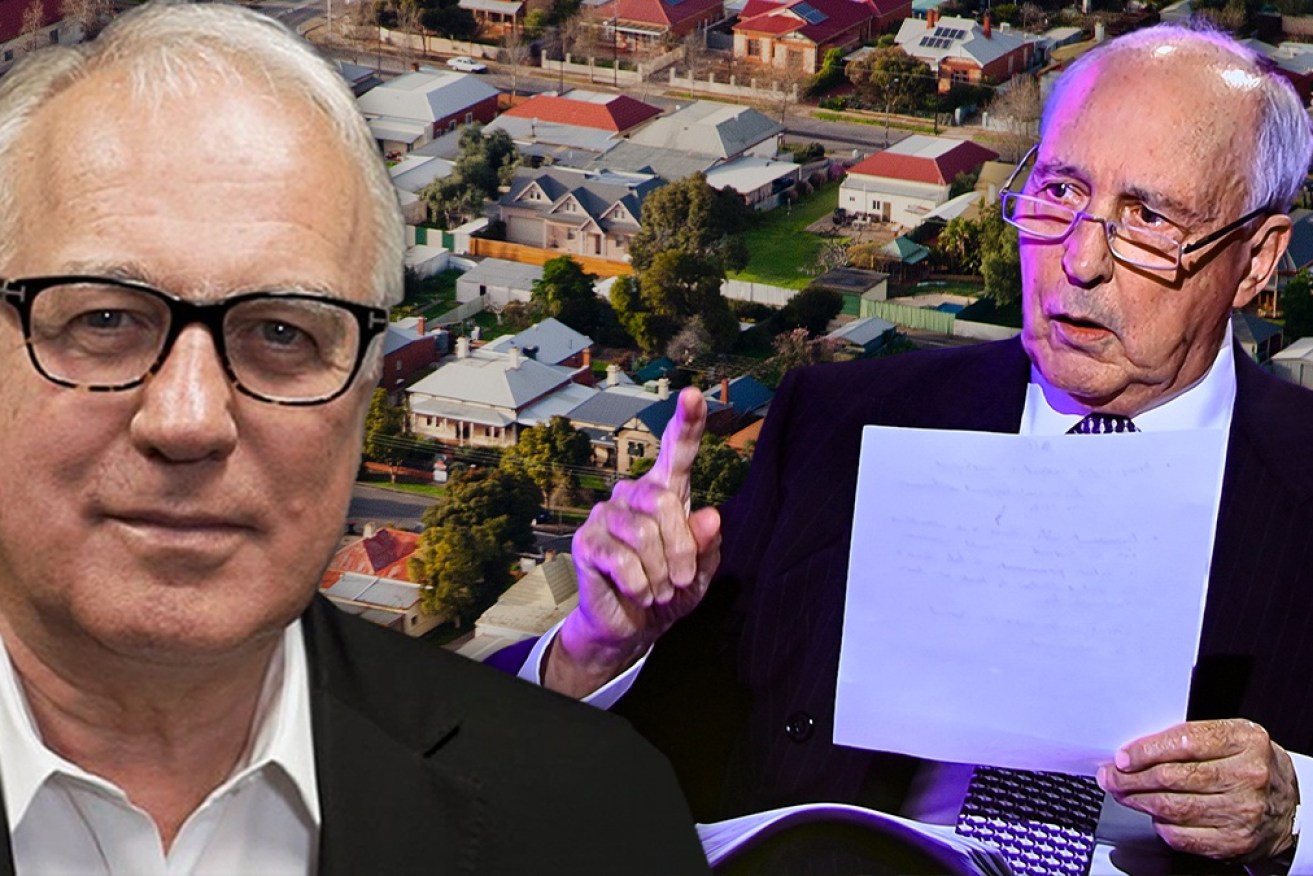Alan Kohler: Evan Thornley’s plan to get super funds into housing


Paul Keating wants to see super funds get into housing. Photo: TND
This week former PM and treasurer, Paul Keating, delivered a pretty clear warning to the super funds.
“This is a society that can’t house its own children,” he said. “If super funds just think they can go buy tech stocks in America and highways in Italy, they’re going to run into trouble. Without being heavy-handed, there is a requirement of the funds to look at social opportunities.”
Keating’s remarks accompanied a statement by the current Treasurer Jim Chalmers urging super funds to invest more in housing and other “national priorities”.
Chalmers said: “We see trillions of dollars in workers’ capital, we see government budgets heaving with debt, and there are obvious needs for investment, particularly in areas like housing and energy.”
So the Keating iron fist in the Chalmers velvet glove is that if the super funds don’t invest in housing voluntarily, the Labor government will make them.
But if they’re talking about putting money into national interest projects with low returns, they can count my super out, and yours too I’d say. Our super is for our own retirement, thanks very much, and the returns are what matter most.
But it’s very doubtful that the government force the issue with a modern version of the old 30/20 rule, which required life insurers and pension funds to invest at least 30 per cent of their money in government bonds in return for their tax breaks until it was abolished by none other than Paul Keating in 1984.
Biggest asset class
That means none of the $3.4 trillion in super funds will find its way into housing unless their boards and investment managers can viably invest in it – that is, unless there’s a liquid market and the risk/return equation makes it worthwhile.
It is certainly a big asset class – the biggest, in fact: Total residential housing in Australia is $10 trillion, of which about $2.1 trillion is mortgage debt and $300 billion is in new developments. That leaves $7.6 trillion in equity in existing residential property, which is three times the size of the sharemarket.
Research by Shane Oliver, of AMP, shows that the total return from residential property since 1926 has been 11 per cent a year – almost identical to the 11.3 per cent p.a. return from the sharemarket, but with much less volatility, so that’s a tick.
Real estate earns lower rental yields than company dividends provide, but the gap is made up with capital gains.
The average dividend yield on the sharemarket is 4.5 per cent, and close to 6 per cent if you add back the franking credits. Capital city houses and units yield 3.2 per cent at the moment and regional areas 4.1 per cent, but that’s before tax and costs; after them, it’s 2 to 3 per cent, or a bit more if there’s negative gearing.
But no one invests in residential property for income, only capital gain, and negative gearing contributes to the fact that the field is dominated by individuals with high taxable income looking for deductions.
The problem is super funds see all property as income assets, but that’s only true of commercial property – shops, offices, warehouses and factories – whereas residential property is clearly for a capital growth and, for some, tax deductions.
The other reason super funds stay away from this $7.6 trillion asset class is that they can’t get scale – they are simply not set up to invest in single houses and units at $1 million to $2 million apiece. They need large investment vehicles, preferably with the ability to sell quickly, in large lumps, if they need to.
Thornley to the rescue
Enter Evan Thornley, founder of LookSmart, Australia’s first US-listed tech company, former member of Victorian Parliament and former Australian CEO of Better Place, the electric vehicle charging venture that blew up in 2013.
Since then, he’s been working on a plan to get institutional investors into residential property.
Thornley is a methodical person who learnt some bitter lessons at Better Place, so he put a lot of thought and planning into this idea, including the creation of a property management business to learn the industry.
His company, LongView, now manages 4300 properties for individual investors and is also a national buyers’ advocate.
The aim, apart from learning the market, is to improve the rental experience for both tenants and landlords – to “dignify tenancy”, as he puts it, and provide a better service for investors, including guaranteed rent, where LongView takes the risk.
Those businesses are going well, but the main plan is to set up two residential property funds for institutional and wholesale investors: Both will buy “solid older dwellings on well-located land”, as Thornley puts it, in the suburbs.
One of the funds will be for long-term rental, and the other will invest alongside home buyers in a shared equity scheme.
“Our shared equity clients are almost all migrants and children of migrants; sole parents and the children of sole parents,” says Thornley. “That is, people without the Bank of Mum & Dad.’’
In the shared equity arrangement, the fund wouldn’t own any part of the house but would provide up to a third of the deposit and stamp duty in return for a contract to share in the capital gain when it’s sold.
 Thornley says the house would be owned by the individual, they wouldn’t pay rent or interest, and they would decide if and when to sell. The fund would be entirely aimed at getting one-third of the capital gain when it’s sold.
Thornley says the house would be owned by the individual, they wouldn’t pay rent or interest, and they would decide if and when to sell. The fund would be entirely aimed at getting one-third of the capital gain when it’s sold.
Retrofitted
The other fund will be a straightforward real estate investment trust that will create a suburban land bank of existing houses for rent close to stations and shops so that large aggregated sites can be used for affordable housing in future. The houses can all be energy retrofitted up front to address one of the biggest problems in the existing built environment.
Thornley says the initial interest in these funds will come from family offices and high net worth individuals.
“Then if the super funds can overcome their assumption that property is a yield asset class, they may follow. If not, Australia’s landlords have over $2 trillion in the asset class, and these funds will give them exposure to higher-quality assets, liquidity and diversity and no headaches.
“This will gradually move landlords out of direct rental ownership with all its hassles for landlord and tenant, and enable those homes to be available to owner-occupiers through shared equity and dignified rental though the REITs.”
Whether it’s Evan Thornley or someone else, the only way the superannuation pool can be mobilised for housing is if it can be pooled into funds that break down the super funds’ bias against it as an asset class and work as a decent investment.
Alan Kohler writes twice a week for The New Daily. He is also editor in chief of Eureka Report and finance presenter on ABC News








